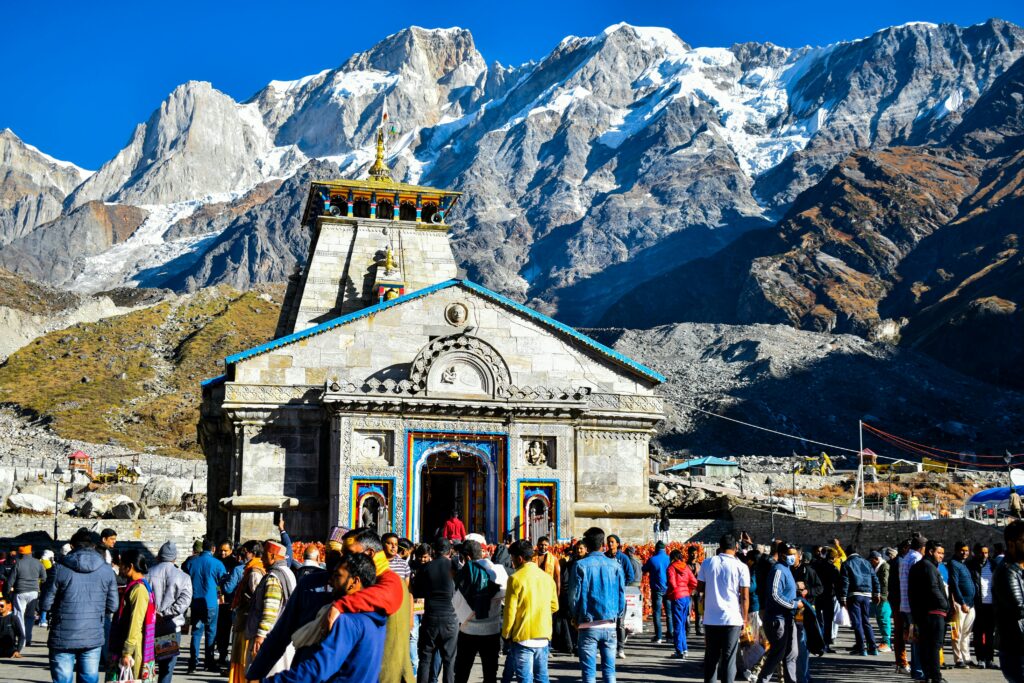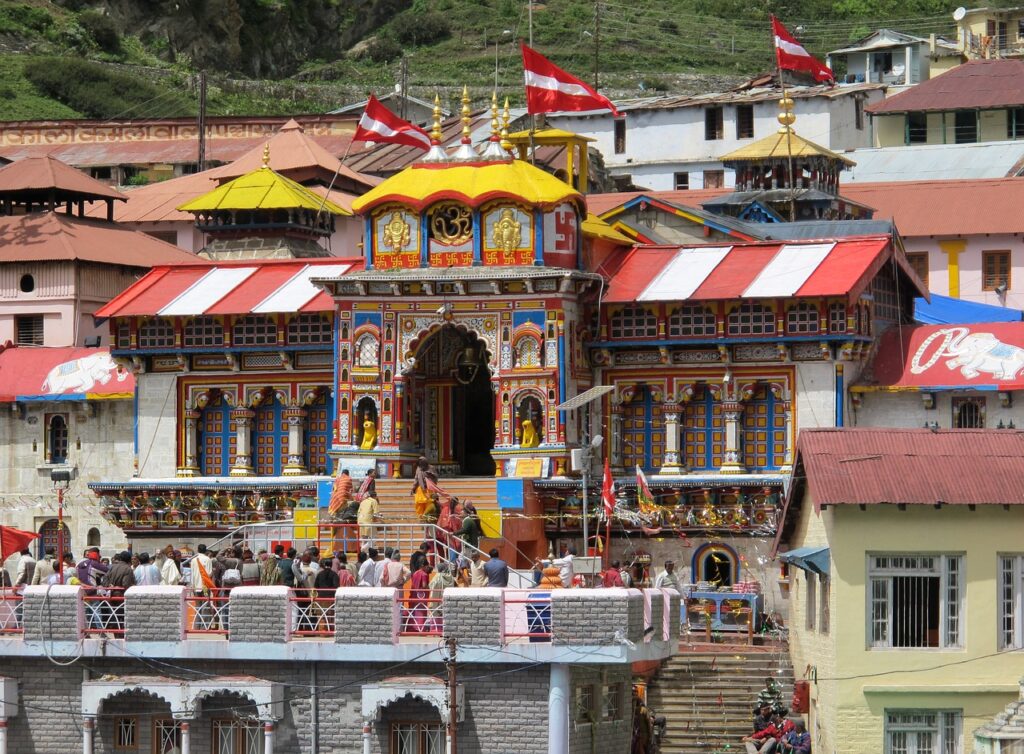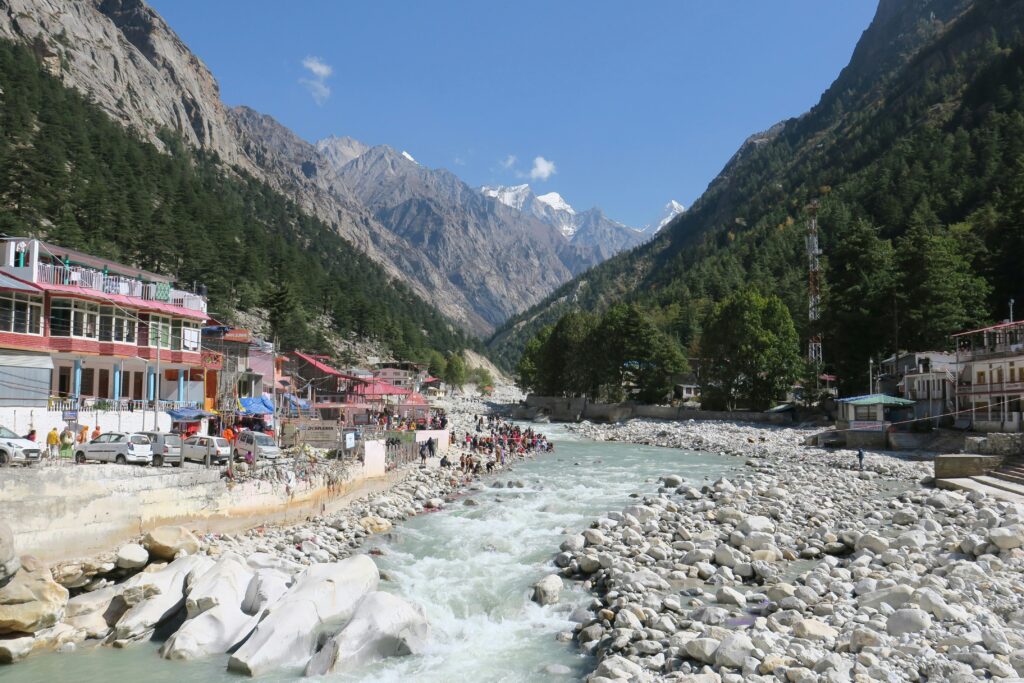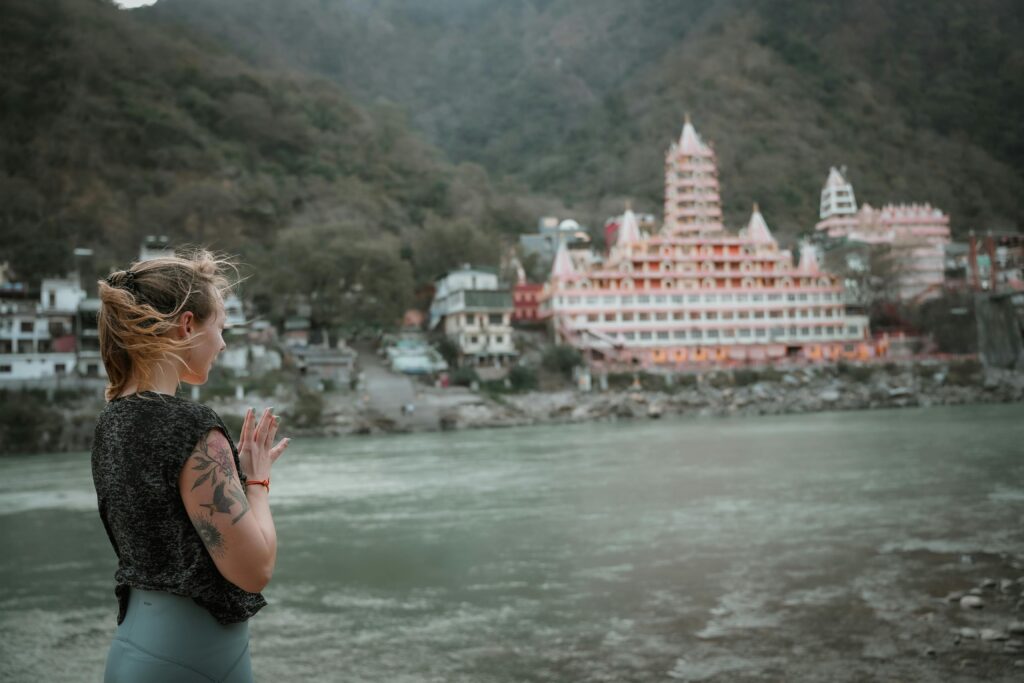1.Kedarnath
Chardham in Uttarakhand refers to the four sacred pilgrimage sites nestled in the majestic Himalayas — Yamunotri, Gangotri, Kedarnath, and Badrinath. These shrines hold deep religious importance in Hinduism and are believed to wash away sins and grant salvation (moksha).
Every year, thousands of devotees and spiritual travelers undertake the Chardham Yatra to seek blessings and experience peace in the lap of nature.
What are the Four Dhams of Uttarakhand?
1.Kedarnath – Abode of Lord Shiva
One of the 12 Jyotirlingas of Lord Shiva, Kedarnath is among the holiest temples in India. Situated near the Mandakini River, it stands as a symbol of strength and devotion. The trek to the temple is challenging but spiritually uplifting.
- Best Time to Visit: May to November (depending on weather)
- Altitude: ~3,583 meters
- Trek: 16–18 km from Gaurikund
The Kedarnath Trek
Reaching Kedarnath requires a trek, as there is no direct road access to the temple. The journey begins from Gaurikund, from where a 16 to 18 km uphill trek leads to the temple.
Modes of Travel:
- On foot (for trekkers and pilgrims)
- Ponies or palanquins (palkis)
- Helicopter services (available from Phata, Sersi, Guptkashi, and Dehradun)
The trek is challenging but spiritually rewarding, surrounded by rivers, snow-clad mountains, forests, and waterfalls, making it a truly divine experience.

2.Badrinath – Home of Lord Vishnu
Badrinath is dedicated to Lord Vishnu and lies on the banks of the Alaknanda River. It is believed that Lord Vishnu meditated here for thousands of years. The colorful temple architecture and natural hot springs nearby attract both pilgrims and tourists.
- Best Time to Visit: May to November
- Altitude: ~3,300 meters
- Highlight: Tapt Kund – a sacred hot water spring
Important Places Around Badrinath
1. Tapt Kund
A natural hot water spring located just below the temple. Pilgrims take a holy dip here before entering the temple.
2. Mana Villag
- Vyas Gufa (cave where Ved Vyas composed the Mahabharata)
- Ganesh Gufa
- Bheem Pul (a natural rock bridge over Saraswati River)
3. Charan Paduka
A rock believed to bear the footprints of Lord Vishnu, located on a small hill near Badrinath.

How to Reach Badrinath
By Road:
Badrinath is well connected by road to major towns like Haridwar, Rishikesh, Joshimath, and Dehradun. Shared taxis and buses run regularly during the yatra season.
By Rail:
The nearest railway station is Rishikesh (approx. 295 km).
By Air:
The nearest airport is Jolly Grant Airport, Dehradun (around 310 km). Helicopter services are also available from Dehradun and Phata during the pilgrimage season.
3.Gangotri
Gangotri marks the birthplace of the sacred River Ganga. The temple is dedicated to Goddess Ganga, and the actual origin, Gaumukh Glacier, lies about 19 km uphill. The peaceful aura and riverfront make it a serene destination.
Best Time to Visit: May to mid-November
Altitude: ~3,100 meters
Highlight: Bhagirath Shila – where King Bhagirath is believed to have meditated
The main attraction of the town is the Gangotri Temple, built in the early 18th century by the Gorkha General Amar Singh Thapa. The temple is made of white granite and reflects simple yet elegant Himalayan architecture.
Key Features:
- The temple is dedicated to Goddess Ganga.
- It opens around April/May on Akshaya Tritiya and closes on Diwali in October/November.
- In winter, the idol of Ganga is moved to Mukhba village, near Harsil, for worship.
The temple attracts thousands of devotees each year who come to offer prayers and take holy dips in the river near the Brahma Kund, the main bathing ghat.

Geographical and Natural Beauty
Gangotri is located on the banks of the Bhagirathi River, which later becomes the Ganga after its confluence with the Alaknanda at Devprayag. The region is blessed with scenic beauty, surrounded by peaks like Shivling, Bhagirathi sisters, and Mount Sudarshan.
Dense pine and deodar forests, icy glaciers, and the fresh mountain air make Gangotri a paradise for both pilgrims and nature lovers.
Source of River Ganga – Gaumukh Glacier
While Gangotri is considered the spiritual origin of the Ganga, the actual physical source is the Gaumukh Glacier, located about 18–19 km from Gangotri. “Gaumukh” means “cow’s mouth”, as the glacier is shaped like a cow’s snout.
Trek to Gaumukh:
- Starts from Gangotri and passes through Chirbasa and Bhojwasa.
- Requires permission from the forest department as it’s within the Gangotri National Park.
- Trekkers and pilgrims alike enjoy this route for its scenic views and spiritual atmosphere.
Other Important Sites Near Gangotri
1. Pandava Gufa
A cave about 1.5 km from Gangotri, believed to be where the Pandavas meditated during their exile.
2. Surya Kund
A beautiful waterfall near the temple where devotees offer prayers.
3. Bhagirath Shila
A sacred rock near the temple where King Bhagirath is believed to have meditated.
4. Harsil
A scenic valley town about 25 km from Gangotri, known for its apple orchards and peaceful environment.
How to Reach Gangotri
By Road:
- Well connected to Rishikesh, Haridwar, Dehradun, and Uttarkashi.
- Buses and shared taxis operate regularly during the pilgrimage season.
By Train:
- Nearest railway stations: Rishikesh (270 km) or Dehradun (250 km).
By Air:
- Jolly Grant Airport (Dehradun) is the nearest airport, about 250 km away.
4.Yamunotri – Source of River Yamuna
Located in the Uttarkashi district, Yamunotri is the origin of the Yamuna River, worshipped as a goddess. The temple is dedicated to Goddess Yamuna. Pilgrims also visit the Surya Kund, a hot water spring where rice is cooked as prasad.
Best Time to Visit: May to October
Altitude: ~3,293 meters
Trek: 6 km from Janki Chatti

Religious Significance
According to legends, Maharishi Asit used to bathe in both the Ganga and Yamuna rivers every day. When he grew too old to travel to Gangotri, a stream of Ganga appeared at Yamunotri itself, blessing the region.
The Yamunotri Temple, built in the 19th century by Maharani Gularia of Jaipur, is dedicated to Goddess Yamuna. Bathing in the river is believed to cleanse sins and protect against untimely death.
Surya Kund – The Hot Water Spring
Right next to the temple lies the Surya Kund, a natural hot water spring with boiling water. Pilgrims tie rice and potatoes in cloth and dip them in the spring. This cooked food is taken as prasad (holy offering).
- Temperature: Can reach up to 88–90°C
- Belief: Cooking food in Surya Kund brings blessings from the Sun God
Travel Tips for Yamunotri Pilgrims
- Wear comfortable trekking shoes and warm clothing
- Carry water, glucose, and energy snacks
- The trek is steep in some places – pace yourself
- Early morning darshan is more peaceful
- Pre-book pony/palki if needed